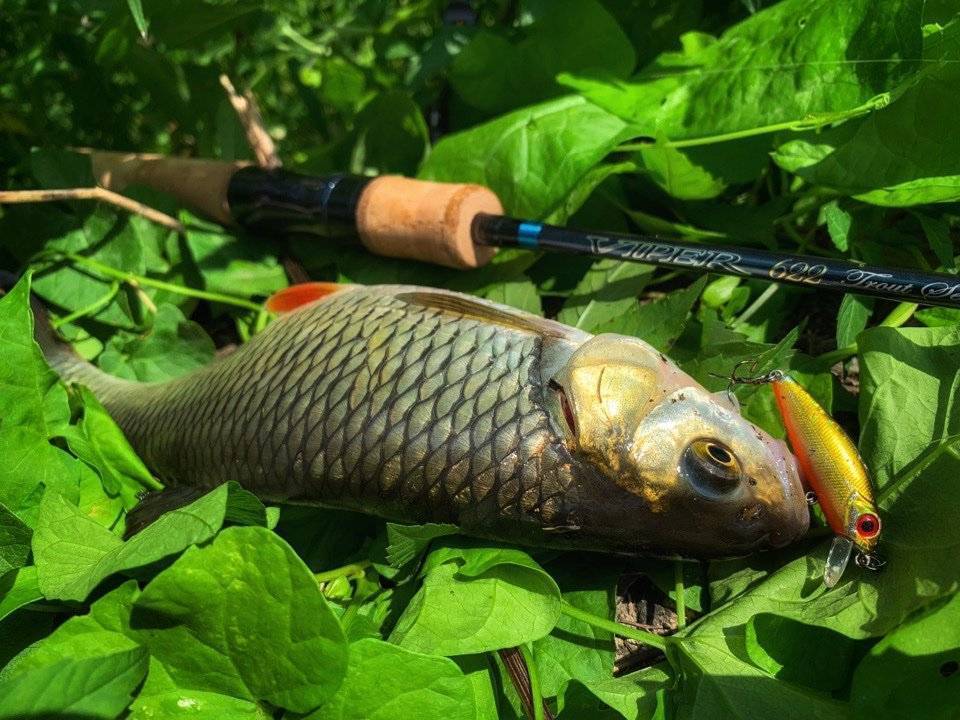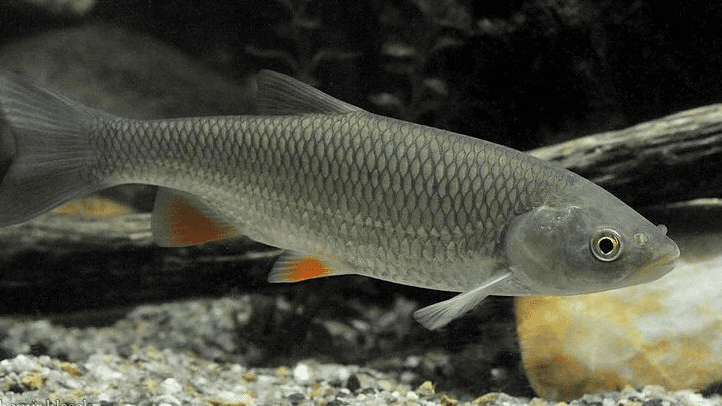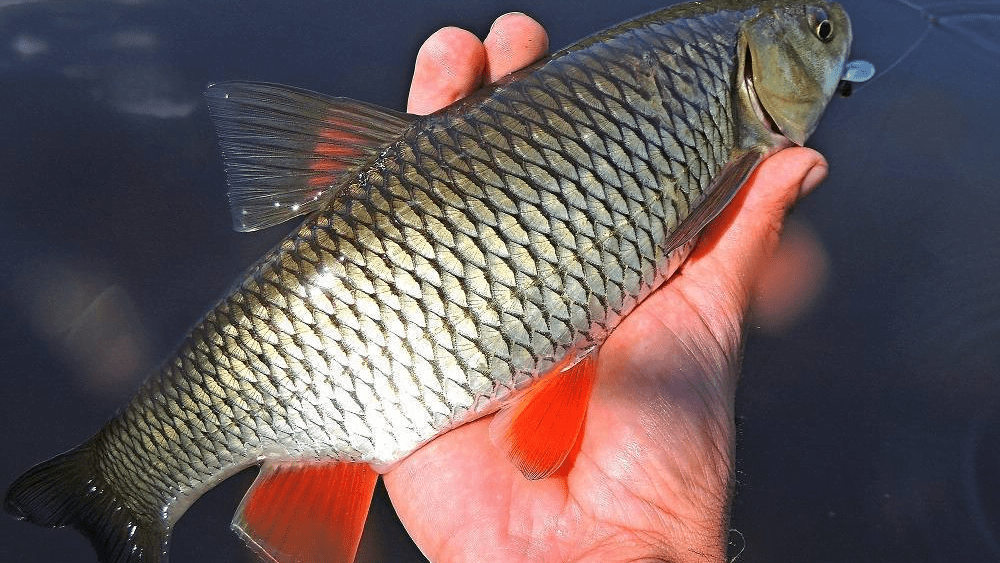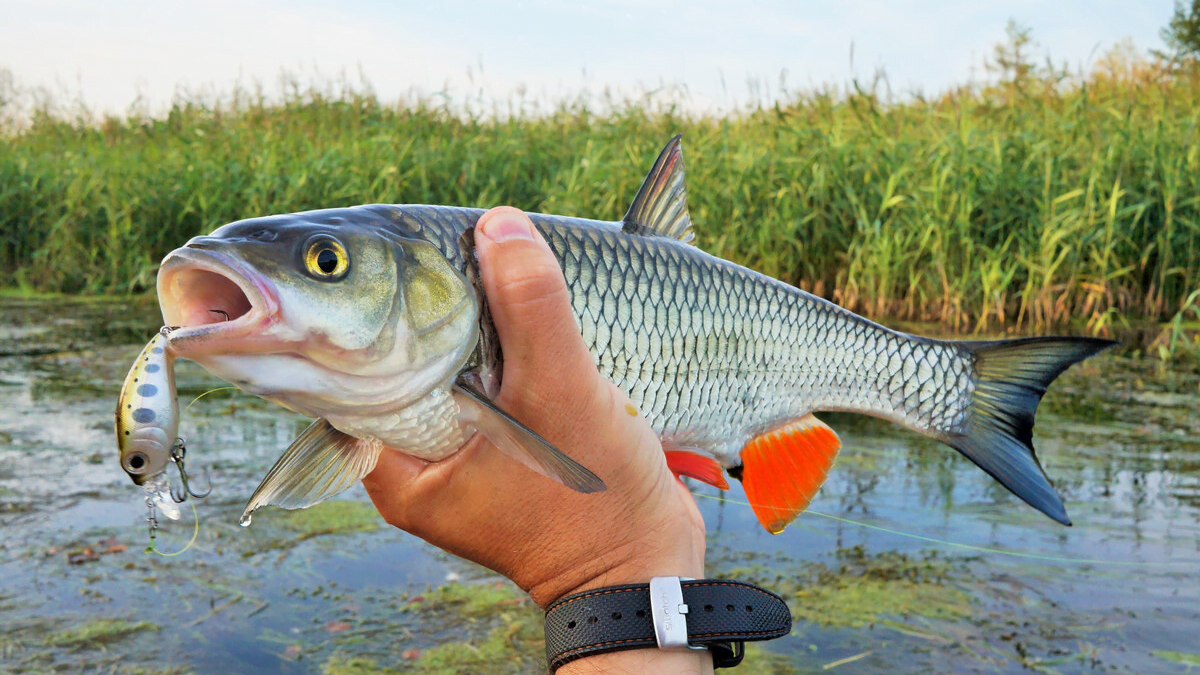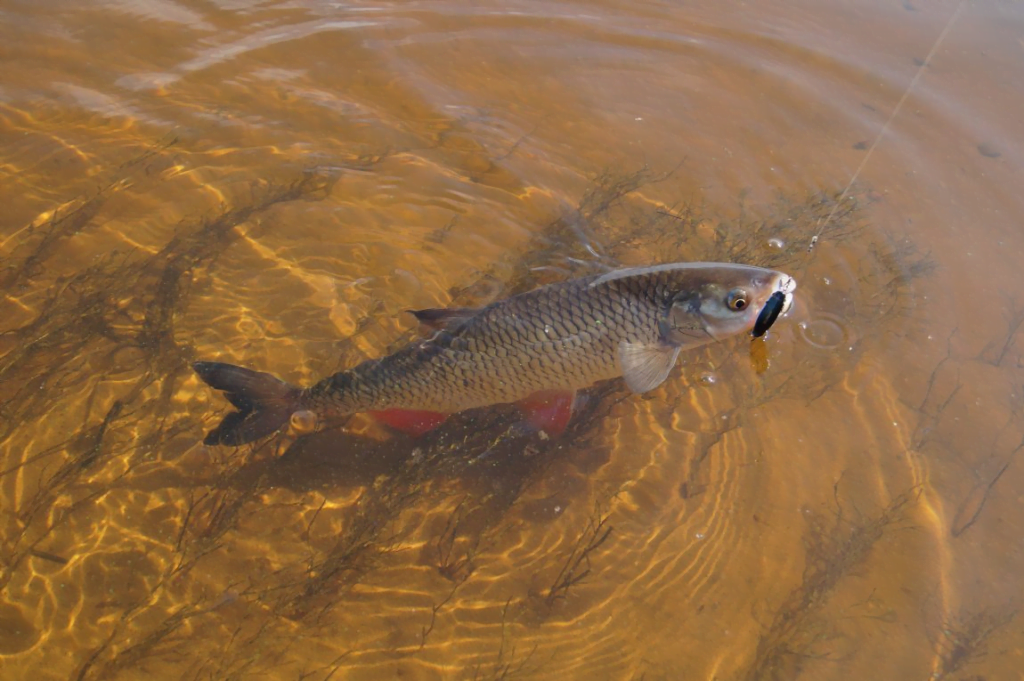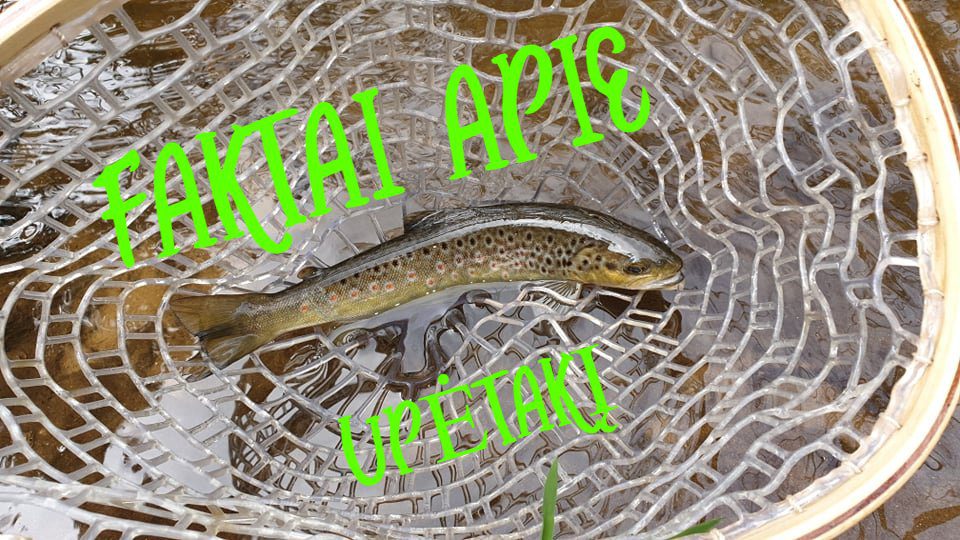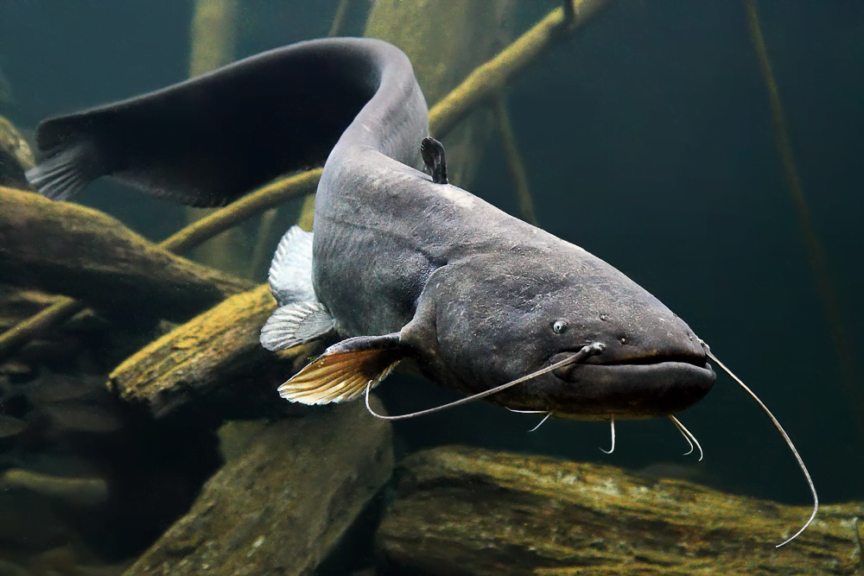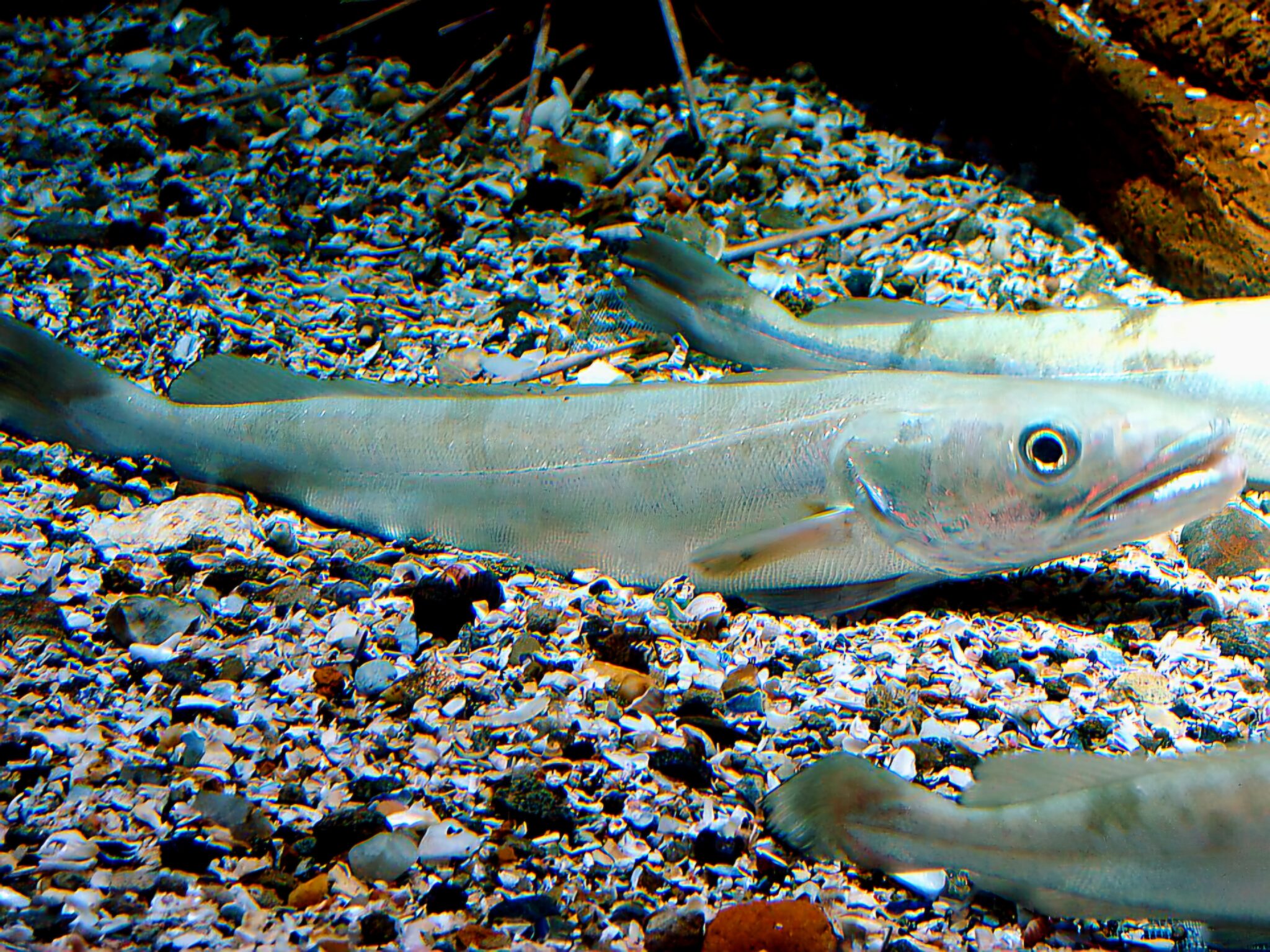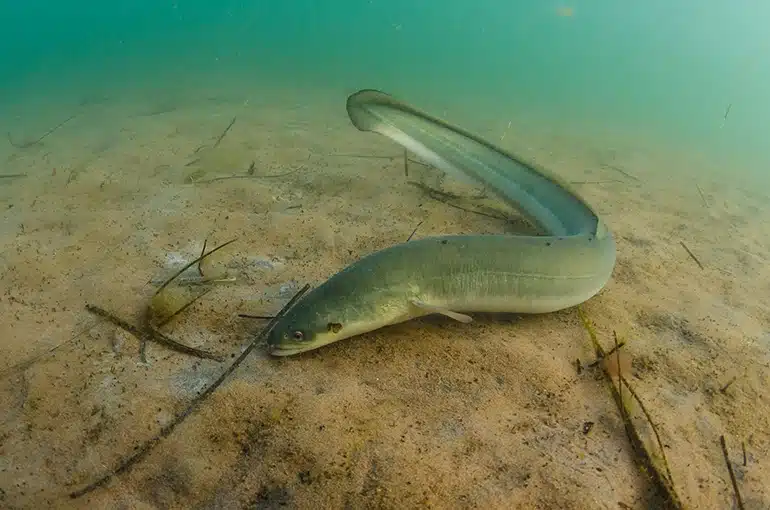Šapalas – plačiai paplitusi vidutinio dydžio žuvis iš karpinių šeimos. Būdingas šapalo bruožas yra didelė galva, suplota viršuje, su plačia ir plokščia kakta. Šapalas yra vienas iš populiariausių žvejybos taikinių vasara upėse. Jis stiprus kovotojas su kuriuo smagu susikauti naudojant lengvus žvejybos įrankius. Pamėginkime pažinti šią žuvį iš arčiau ir išsiaiškinti kaip ši žuvis gyvena mūsų upėse.
Kaip atrodo šapalas
Šapalas yra nepaprastai graži žuvis. Turi tvirtą, pailgą cilindrinį kūną, šiek tiek suspaustą į šonus ir palaipsniui siaurėjantį link uodegos. Kūno forma iš karto parodo, kad jis puikiai plaukia srovėje.
Šapalo galva yra daug didesnė nei daugelio kitų žuvų. Iš viršaus šiek tiek paplokščia, turi plačią ir plokščią kaktą.
Jis turi dideles, blizgančias, gelsvas akis. Viršutinėje akies dalyje yra rusvai geltona dėmė.
Šapalo nugara ir šonai padengti stambiais žvynais, tvirtai pritvirtintais prie kūno. Žvynai yra seno sidabro spalvos, šiek tiek auksinio atspalvio. Šoninė linija beveik tiesi, bet arčiau galvos šiek tiek nukrypusi į pilvą. Nugara tamsi, beveik juoda, su lengvu tamsiai žalios, mėlynos arba violetinės spalvos atspalviu.
Amžius ir dydis
Vidutinis šapalo dydis paprastai siekia 1-1,5 kg, o ilgis 35-40 cm. Kai kuriose didelėse upėse gali pasiekti 4 kg, o kartais didesnį svorį.
Šapalas auga palyginti lėtai, sulaukęs 3 metų sveria tik apie 150 g, 6-7 metų pasiekia 500 gramų svorį, o 9-10 metų sveria 1 kg. Augimo greitis priklauso nuo maisto bazės ir vandens temperatūros.
Maksimali gyvenimo trukmė yra apie 20-25 metus, tačiau tokio amžiaus sulaukia tik vienetai.
Kokius upės ruožus renkasi šapalas
Šapalas yra jautrus vandens švarumui ir prisotinimui deguonimi, todėl gyvena upėse, kurių tėkmės ir vidutinės ir greitos. Stovinčio vandens telkiniuose praktiškai negyvena.
Dažniausiai gyvena upės aukštupyje nei žemupyje ar prie žiočių. Kalnų tipo upėse dažniau pasitaiko upės vidurupyje ir žemupyje.
Upėje šapalas renkasi vietas su sraunia srove, kietu smėlėtu ar akmenuotu dugnu, stačius arba krūmais ir medžiais apaugusius krantus. Vengia dumblėtų vietų.
Mėgstamiausios vietos upėje:
- Perkritimai, aukščiau ar žemiau jo, palyginti ramiose, gilesnėse vietose, pasislėpus už kokios nors priedangos
- Sėkliai smėlėtu, akmenuotu ar tiesiog nelygiu dugnu
- Greitųjų ir atvirkštinių srovių ribos
- Sraunios upių atkarpos
- Upės atkarpos su medžiais ir krūmais, kabančiais virš vandens
Kuo minta šapalas
Šapalą galima vadinti visaėde žuvimi. Jaunas šapalas daugiausia minta vabzdžiais ir augalinėmis medžiagomis. Suaugę dideli šapalai taip pat minta augaliniu maistu ir vabzdžiais, tačiau jų racione vis dažniau dominuoja žuvų mailius ir kitas gyvūninis maistas. Šapalas labai mėgsta karkvabalius, laumžirgius, žiogus.
Šapalas minta upių pakrantėse augančių ir iš jų į vandenį krentančių ar liūčių į upę išplautų augalų vaisiais ir sėklomis. Mėgsta vyšnias, avietes, agrastus, gervuoges, serbentus, saulėgrąžas, slyvas, kukurūzus ir žirnius.
Dauginimasis
Lytiškai subrendęs tampa 2-3 metų amžiaus, tuo metu jis sveria tik 100-200 gramų. Nerštas prasideda, kai vanduo įšyla iki 12-17 laipsnių. Tai vyksta skirtingu metu skirtinguose regionuose. Nerštas trunka 4-7 savaites.
Šapalas neršia savo nuolatinės buveinės apylinkėse. Nerštui jis renkasi seklias vietas, su vidutine srove ir kietu akmenuotu dugnu.
Nerštui šapalai iškeliauja etapais, pirmieji neršia stambūs individai, kurie neršia ne pirmą kartą. Jauni jaunikliai, pirmą kartą gyvenime dalyvaujantys neršte, neršia kiek vėliau, kai vanduo labiau įšyla. Nerštavietėje patelių yra maždaug dvigubai daugiau nei patinų. Nuo kranto gerai matosi žuvų nerštas, jie iškiša nugaras iš vandens ir purslais kelia daug triukšmo. Išneršus vienai grupei, ji pasišalina, o po kurio laiko ateina jos pakeisti kita. Išneršę pasitraukią į gilias vietas ir ten atgauna jėgas, kurį laiką visai nevalgo. Pailsėję ir atgavę jėgas, po savaitės pradeda intensyviai maitintis.
Priklausomai nuo dydžio, patelė gali dėti nuo 10 000 iki 200 000 kiaušinių. Ikrai yra maži, aguonos dydžio, ryškiai oranžiniai. Nemažą dalį šapalų padėtų kiaušinėlių nuneša srovė. Kitą ikrų dalį suėda kitos žuvys.
Mailius išsivysto iš kiaušinėlių per 5-7 dienas. Po išsiritimo mailius laikosi netoli kranto, ramiose vietose arba slepiasi tarp vandens augmenijos.
Šapalo mailius minta zoo planktonu. Arčiau rudens mailius būriuojasi į pulkus, kurie gali pasiekti iki kelių šimtų žuvų ir eiti į gilumą žiemoti.
Šapalas kulinarijoje
Žuvies mėsa turi didelę maistinę vertę: 125-130 kcal 100 gramų . Šapalo mėsa yra laikoma dietiniu produktu, nes joje yra daug baltymų (17,8%) ir mažai riebalų (5,6%). Jame yra subalansuota vitaminų ir mineralų sudėtis, yra daug fosforo, kalio, natrio ir kalcio, gausu vitaminų A, B1, B5, B6, B9, B12. Šapalo mėsa yra lengvai virškinama ir nestabdo medžiagų apykaitos procesų.
Šapalas gana kaulėta žuvis, kurio mėsa skleidžia šiek tiek specifinį upės dumblo kvapą, vieniems šis kvapas labai nemalonus.
Dumblo kvapo galima atsikratyti žuvį marinuojant acte arba citrinos sultyse su prieskoniais.
